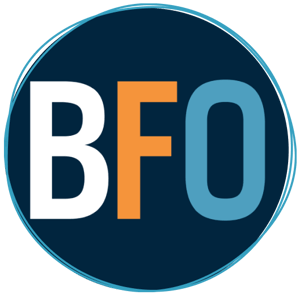Solving the Digital Marketing Puzzle: Paid Search + Display Ads
September 04, 2018
9 Minute Read


We see ads online day in and day out. What we don’t see, though, are the behind-the-scenes strategies that serve the right ads to the right people. To ensure online ads meet the right screens, we spoke with our resident paid search and display advertising expert Scott Diebel, Paid Media Senior Account Manager, to learn why both are necessary for a fully comprehensive digital marketing suite that brings in results.
Hi Scott, let’s start off with something simple. Can you walk us through some of the fundamentals of paid search advertising?
Scott Diebel (SD): Sure thing. To gain success in paid search advertising, you need a highly-tailored messaging and keyword strategy. Paid search is actually more successful than most digital advertising channels because rather than inferring someone’s purchase intent based on their demographics or interests, searchers express their intent with the words they search. For example, it’s clear that someone searching, “Cheap Rain Boots” has a high likelihood to purchase rain boots, making serving rain boot ads to this person more cost effective than other channels where the intent is less clear.
Interesting. How does this affect competition for ad spots on SERPs?
SD: Absolutely. There are so many advertisers out there, and most if not all leverage paid search to promote products, which leads to higher competition. Following the rain boots example, there may be hundreds of advertisers offering rain boots online who all want to reach this searcher. With only 4 top-of-page ads showing at a time, competition for those top spots becomes fierce, leading advertisers to either bid higher for their ad to show or improve their quality score.
How do you get to a top-of-page ad?
SD: An ad’s position on the SERP (search engine results page) is determined by a combination of cost per click bid and quality score which is primarily made up of an ad’s and landing page’s relevance to the keywords being searched.
For example, an advertiser who is paying to serve ads on the keyword “Cheap Rain Boots” will receive a higher quality score if their ad copy contains the words “Cheap Rain Boots” as opposed to just “Boots” or “Rain Boots.” They will also gain increased relevance if the landing page someone arrives at after they click the ad contains the words “Cheap Rain Boots” as well.
By structuring your account in a way that matches highly-relevant copy and landing pages with the keywords being searched, you can earn a higher quality score and therefore pay less to secure the top positions on the SERP. Since top positions typically yield higher CTRs (click-through rates), a strategic, highly-tailored account structure can earn more traffic at lower costs. More importantly, it allows the advertiser to win the ad auctions that are most profitable and stave off competition from advertisers employing simpler strategies.
So, you keep mentioning creating a strategic, highly-tailored keyword structure. How do marketers do this?
SD: It’s really about honing in on more specific keyword match types. There are four main match types (Broadest to Most Exact): Broad, Broad-Match Modified, Phrase, and Exact.
Broader keywords serve ads for a wider range of searches which is great for scaling and ease of management but also lets in a significant amount of irrelevant traffic.
For example, with a broad keyword like Rain Boats, an advertiser would show ads to someone searching for “Black Rain Boots On Sale,” but would also serve ads for an irrelevant search like “Kid in Rain Boot Poster” since Rain Boot is contained within that search.
By building an extensive list of possible searches that match your product (Rain Boots for Sale, Buy Rain Boots, Buy Rain Boots Online, etc.) instead of relying on broader keywords, you ensure you’re only paying for ads that are reaching an audience with purchase intent.
Does this relate in any way to the copy within the ads?
SD: The copy containing these keywords complements this approach. If someone searches “Black Rain Boots” and your ad headline is “Buy Black Rain Boots Online,” you’ll have a much better chance of earning clicks and ranking above competitors than if your ad just said, “Buy Boots Online.” This requires many more ads and a more elaborate account structure, but the benefits far outweigh the cost of the initial set-up time.
Finally, once you’ve created a structure that will allow you to be successful, it’s essential to optimize your account based on the performance data that’s coming through. Advertisers can set bid modifiers which change how much they’re willing to pay for an ad click based on different criteria such as time of day, the day of the week, location, gender, age, device, and much more.
For example, if an advertiser understands their product sells best on Tuesdays, they may be more willing to pay a premium for Tuesday clicks. Advertisers have plenty of options at their disposal to modify how their account runs, but the core of making smart decisions is understanding what’s working and what’s not by analyzing the data. By monitoring and editing, advertisers can make sure they’re reaching the right people.
Switching over to display ads, how are they inherently different than paid search ads?
SD: Unlike with paid search ads, display ads include images and focus on reaching specific audiences on targeted placements (websites). Without the luxury of a searcher’s intent, it’s up to the advertiser to determine target demographics, interests, and which sites might contain the kind of people interested in their product or service.
Following the rain boot theme, display ad strategy would target a specific age group of women who live in rainy climates and have browsed websites containing the words “boots” or containing the name of the rain boot brand being sold. To take it a step further, we could target people whose past searches and website viewing behavior have deemed a person “in the market” for rain boots using Google’s powerful data-backed algorithms.
Both display ads and paid search ads seem pretty compelling. Are there any cost differences?
SD: Display ads are also much cheaper to run than paid search ads due to the vast number of locations these ads can show. Google estimated that they cover 90% of all websites with their extensive Google Display Network, making the average cost per click as much as 10 times lower than the typical paid search ad. Therefore, display ads end up being more successful at driving awareness than paid search. That being said, display ads may not lead to as many or as efficient conversions as paid search ads.
What’s your suggested solution for success?
SD: To be the most successful in digital advertising, it’s best to test a variety of different targeting methods at once to hone in on the most active audience and placements. By creating different variations of your ad copy, you can see which images resonate most with your audience. This is even more important in display advertising than with paid search where ads are much more similar to one another.
Numbers don’t lie, and by experimenting with different targeting options, you can turn your inferences about which targeting will be effective into data-backed results and even combine targeting options in the future. For example, if targeting audiences age 34-45 is useful in one campaign and Seattle is a valid location target in another, launching a new campaign targeting 34-45 year olds in Seattle can be an effective way to turn your learnings into improved results.
It sounds like you’re on board for implementing both in a digital marketing program. How would you utilize both tactics to create the best results?
SD: While search and display ads can be useful on their own, combining the two typically leads to stronger results than running one or the other. Since display is much more awareness-focused, lower-cost, and has almost unlimited reach, it’s an excellent tool for an advertiser to inform a wide audience about their products or services. Once someone is made aware of a product or service, they typically search that company or product later to make a purchase or do further research.
- At that point, it’s important for the advertiser to run search ads so they can:
- Control their messaging
- Ensure their ad shows instead of a competitor’s
- Drive searchers to the best page which may not come up with organic results.
Overall, paid search advertising serves as a useful last touch point in the customer journey whereas display kicks off interest. Without both channels running, you run the risk of never reaching a broad enough audience or failing to close sales when opportunities do arise.
It seems like no matter what, running both tactics is a smart move on the marketer’s part. Do you have any final tips or tricks for readers?
SD: Just remember there are many display and paid search advertising elements that create synergy by feeding off of one another. For instance, if you create a remarketing list that shows ads to past website visitors, you can use that remarketing list to increase or decrease paid search bids based on whether or not someone has been to your site before.
You can also review the website where your display ads are most successful and use the page content to spark ideas for new paid search keywords. Finally, you can leverage attribution models to understand how each channels’ ads influence the purchase decision so you can guess which ads played a part instead of giving all credit to the last touch point.
When it comes to solving the digital marketing suite puzzle, paid search and display ads are vital for success. One without the other just doesn’t get the job done. Though our short blog series on connecting the dots to step up your digital marketing strategy is done, your job is just beginning. To learn more about the capabilities of a fully comprehensive digital suite including paid search and display ads, get in touch with the BFO team you know and love and let’s take the next steps to upgrade your marketing program.

The BFO Team
Here at BFO, we're always striving to bring you the latest and greatest in digital marketing insights and education. We're not ones to brag, but we've been lucky enough to be featured in all sorts of fancy publications and media outlets, strutting our stuff and showing off our industry expertise.
CATEGORIES
SUBSCRIBE TO OUR BLOG
Stay up to date with the latest industry best practices in digital marketing!
























.png?width=339&height=179&name=Webinar%20Banner%20(1).png)



.png?width=339&height=179&name=July%20Webinar%20(Newsletter).png)

.png?width=339&height=179&name=Webinar%20Banner-April-02%20(1).png)
%20(4).png?width=339&height=179&name=Webinar%20Banner-May-02%20(1)%20(4).png)




.png?width=339&height=179&name=March%202023%20Webinar%20Ad%20(autoresponder).png)

















































